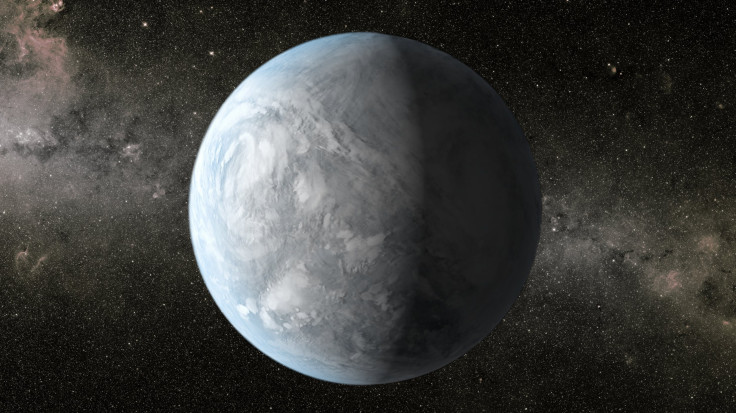NASA Discovers 3 Possibly Habitable Planets... the Next Stop After Globalism?

Using the state-of-the-art Kepler space telescope, NASA researchers have uncovered three planets that may have water on the surface — in other words, they may be the first life-sustaining planets we've found beyond Earth.
The Kepler space telescope simultaneously and continuously measures the brightness of more than 150,000 stars. In doing so, it has become NASA's first mission capable of detecting Earth-size planets around stars like our sun.
"The Kepler spacecraft has certainly turned out to be a rock star of science," said John Grunsfeld, associate administrator of the Science Mission Directorate at NASA Headquarters in Washington.
"It is only a matter of time before we know if the galaxy is home to a multitude of planets like Earth, or if we are a rarity," Grunsfeld said.
The Kepler-62 system has five planets — 62b, 62c, 62d, 62e and 62f — while the Kepler-69 system has two — 69b and 69c. The super-Earth-sized planets within the "habitable zone" (where surface temperatures are suitable for liquid water and so can sustain life) are Kepler-62e, 62f, and 69c.
Originally Kepler's software recognized only two transits of the planet across the Kepler 62 star. Kepler-62e was the first of these habitable zone planets identified. With an orbital period of 267 days, Kepler-62f was later found by Eric Agol, associate professor of astronomy at the University of Washington. Agol detected Kepler 62f from a process he developed with his colleague, UW post-doctoral researcher Brian Lee.
Two of the newly discovered planets, those in the Kepler-62 system, orbit a star smaller and cooler than the sun. Measuring just two-thirds the size of our home star and only one-fifth as bright, this star is about 1,200 light-years from Earth in the constellation Lyra. At seven billion years old, the star is also older than the sun. Meanwhile, the Kepler-69 planets' host star is 93 percent the size of the sun and 80 percent as luminous. It is located approximately 2,700 light-years from Earth in the constellation Cygnus.
Astronomers believe Kepler-62f, which is only 40 percent larger than Earth, has a rocky composition. Kepler-62e orbits its star every 122 days and is roughly 60 percent larger than Earth; its surface composition is unknown. Astronomers are uncertain about the nature of Kepler-69c, but it is 70 percent larger than Earth and its orbit of 242 days around a sun-like star resembles that of Venus.
Although it's not yet time to pack your bags, William Borucki, Kepler science principal investigator at NASA's Ames Research Center, said, "We are making excellent progress toward determining if planets like ours are the exception or the rule."



























